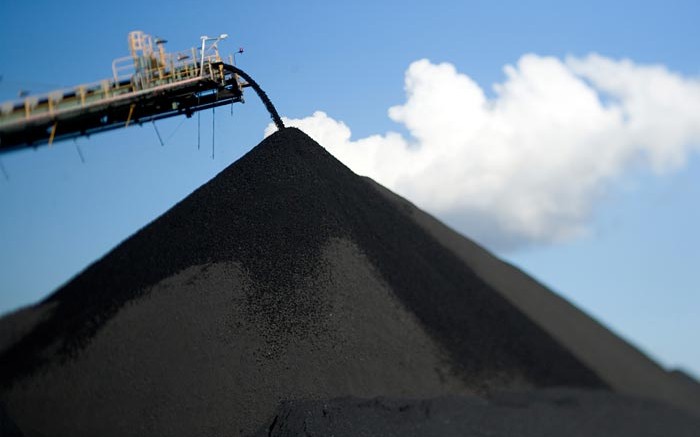With coal prices sitting at multi-year lows, almost 17% of coal production this year in the U.S. could be at risk of idling or closure, as total cash costs plus sustaining capital expenditures exceed current market prices, Wood Mackenzie says in a new coal market outlook.
Most of the coal at risk in the U.S. is produced in Central Appalachia, where 72% of total output is unprofitable, the intelligence firm estimates, which specializes in energy, metals and mining.
Declining productivity, thinning seams, rising strip ratios, tougher environmental regulations and expensive labour have all “taken their toll,” the Wood Mackenzie report summarizes, while coal prices have tanked.
The benchmark thermal coal price has fallen by 50% in the space of four and a half years. Since peaking in January 2011 at US$136 per tonne (freight on board Newcastle), the price has plunged to around US$65 per tonne.
“You’re going to see more bankruptcies,” Dale Hazelton, a senior research analyst at Wood Mackenzie, tells The Northern Miner in a telephone interview from New York. “Production needs to be cut … we’ve hit the tipping point, where we believe most of the savings from cost-cutting have been achieved, and it now boils down to cutting production to fix supply … demand for coal is growing, but it’s not growing quickly, so the only way to correct oversupply is to cut production to get your supply in line with demand.”
Hazelton says it is unlikely China will save the day. “The Chinese have always been opportunistic buyers of coal,” he says. “When they need it, they’ll buy it, but they’re always looking for the lowest prices. If they can’t get the lowest prices, they’re content to sit out of the market.”
In addition, as the price of natural gas gets cheaper and environmental regulations on greenhouse gas emissions in the U.S. get stricter, there is likely to be higher levels of coal-to-gas switching in power generation, Hazelton says.
“Now that the emissions requirements are so tight, the power companies have to generally scrub no matter what coal they’re using,” he says. “Costs of scrubbing are so high that it often pushes some of those coal power plants out of the money. If the capital cost to install the scrubber versus the remaining life of the coal plant doesn’t make economic sense, then power companies will retire the coal plant.”
The U.S. Environmental Protection Agency’s (EPA) Clean Power Plan is set on reducing carbon dioxide emissions from the power sector 30% by 2030 (from 2005 levels), according to a report from the Conference Board of Canada. As a result, “the power generation sector is expected to shift aggressively away from coal-fired generation and toward lower-carbon-intensity natural gas generation,” the Conference Board stated.
“North American natural gas prices have dropped from above $5 per thousand cubic feet (mcf) in the first quarter of 2014 to under $3 per mcf early in 2015,” the Conference Board reported. “With natural gas prices remaining below US$4 per mcf for an extended period of time, some of the coal-to-gas switching has occurred naturally, but the EPA’s proposed rules are expected to accelerate the process between 2015 and 2017.”
Even in Asia, where environmental regulations are not as strict as in North America, and where coal has dominated as the fuel of choice for decades — making up 50% of all power generation across Asia — cheaper natural gas prices are threatening to displace coal as the cheapest option for power generation, Wood Mackenzie states in a March 17 report. (Gas makes up 11% of all power generation across Asia.)
“Downward pressure on gas prices as well as individual market conditions in Asia are creating conditions in which it might compete with coal in the region,” Wood Mackenzie states. “While gas-coal competition is more commonplace in the U.S. and Europe, in Asia, this is a new dynamic as coal and gas prices have not been at close enough levels for this to be a consideration.”
Spot liquefied natural gas (LNG) prices have fallen to US$7 per million British thermal units (mmbtu) in recent months, and Wood Mackenzie does not forecast “any sustained price recovery above US$10/mmbtu, with over a 100 million tonnes per annum (mtpa) of new LNG expected to be operational by 2020.”
It adds that “this looming supply glut will create an environment where coal versus gas competition in Asia is a real possibility.”
Wood Mackenzie’s research director for Asia gas and power Graham Tyler points out that with air pollution in China becoming a real issue and gas-fired power generation subsidized in some provinces, a move away from coal is a possibility. “China is also introducing a national carbon-trading scheme; and other markets are also implementing or looking at carbon initiatives,” he states in a press release. “These factors all make gas the more attractive option.”
Looking at what’s in store for thermal coal prices, Jonny Sultoon, research director on global thermal markets for Wood Mackenzie, expects prices will tread water for several years. He forecasts spot FOB Newcastle coal will hover in the US$62 to US$63 per tonne range in 2015 and in the US$64 to US$65 range in 2016.
“It’s pretty much been a downward spiral in thermal coal since the end of 2010–11,” he says. “To get back to the US$80 per level [for FOB Newcastle coal], is going to be hard, and might take four or five years … you need supply cuts globally in the 50–70 million tonne range, on top of what has already been announced, before you see prices go back up significantly.”
Complicating matters is that the demand side has gotten a lot weaker in the last six months, mainly due to protectionist measures and edicts from Chinese policymakers in Beijing, he says.
One of these was an order in late 2014 that power companies reduce their coal imports by 40–50 million tonnes, collectively. The other was introducing coal-quality tests on imported coal to measure trace elements such as fluorine, chlorine, arsenic and selenium.
“That has scared a lot of people from selling to the Chinese market, because they’re worried their coal might sit in the port for three or four weeks while it’s tested and ultimately might be rejected, or the company might have to pay a penalty,” he says.
“It explains the decline in price, but also explains in our view why demand will be difficult in 2015 and into 2016, because now coal exporters in the Pacific basin who have relied on China for their exports have to recalibrate their sights to India or Southeast Asia. They may not be able to absorb all their losses from China.”
In addition, with the weakening of many exchange rates against the U.S. dollar, some of the key coal suppliers outside of the U.S. — such as Australia, Russia and South Africa — have seen their currencies depreciate, and in Russia’s case, by as much as 70–80%.
“Russia’s thermal coal now has a positive margin because of the exchange rate, so it’s keen to keep exports flowing and not reduce supply,” Sultoon says. And the same thing goes for Australia. “The Aussie dollar has weakened so much that Australian coal that previously was at the borderline of being profitable, is now profitable … there’s more coal that is profitable than there was maybe 12–18 month
s or so ago, so it may encourage them to increase production if it’s profitable.”
In the meantime, with lower oil prices, trucking and freight charges, he says that “prices will naturally be trending not too far away from costs … where costs are coming down, any kind of price recovery back to 2012 levels looks difficult from here.”






Be the first to comment on "Coal sector woes expected to accelerate, experts say"